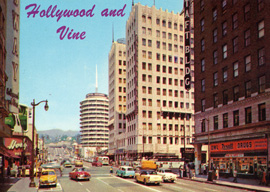
June 07, 2011

The California that gave us the film industry was far from a blank slate. In addition to the land barons, Midwesterners, and gurus whom I mentioned last time, there had also been an influx of creative types. After Mark Twain and Bret Harte planted their literary flags in the Golden State, a crowd of local and imported talent made its mark in the arts. Then as now, San Francisco reigned culturally supreme as the only city from Vancouver to Acapulco that Europeans (or New Yorkers) would recognize by that term. But when the movies came to SoCal, they were flanked by economic and demographic might.
There was far more to California culture than San Francisco’s fine dining and opera. In 1884, Helen Hunt Jackson wrote Ramona, a novel that humanized los Californios’ plight the way Uncle Tom’s Cabin had done for blacks. The massive frauds that decimated so many ranchero families were still very much a living memory, and a massive flow of sympathetic nostalgia brought in more recent settlers from the East who had not participated in the grab. That nostalgia in turn would produce at least two architectural styles: Mission Revival and Spanish Colonial Revival.
Into all of this came the movie industry. The dream factory would have two initial effects: A) it started an onrush of people to Southern California, thus tipping the state’s power balance away from the Bay Area; and B) the new arrivals would need housing, and fast. Mr. Mulholland’s shanghaiing of Owens Lake brought sufficient water to the Southland to make its present size possible. The 1920s and 30s saw the formerly agricultural zone between sleepy downtown Los Angeles and the coast fill up with every conceivable architectural style from all the continents known to man (and perhaps a few as yet undiscovered). This rapid growth did little for the region’s civic spirit; as a scion of one old California family once said to me, “LA is just a corrupt old cowtown that acquired a veneer of Hollywood decadence.” The gangs arrived with Prohibition, and, in LA anyway, things reached a nadir under Mayor Frank Shaw. Film attracted such literary giants as Faulkner and Fitzgerald, though genius appeared in very few films—when it did, however, it REALLY did. This was the Los Angeles of Raymond Chandler and the San Francisco of Dashiell Hammett. It was the birth of noir—film or otherwise.
Interwar California was a lot of fun for a lot of people. Nightclubs such as Coconut Grove, Ciro’s, the Mocambo, the Trocadero, the Cinegrill, and such restaurants as Musso & Frank allowed Hollywood folk to dance and dine alongside the stars—if they had the money. If not, you could catch a glimpse of them strolling the red carpet for a premiere at Grauman’s Chinese Theatre. There were beaches aplenty, gambling on offshore boats, and Catalina Island’s Avalon Ballroom. Those happy few who remember that era truly think of it as paradise.